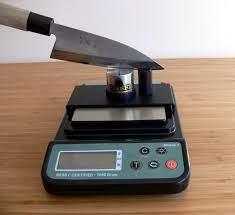Sharpness is one of the most crucial aspects of any cutting tool. A sharp edge is essential for optimal performance and accuracy, while a dull edge can lead to subpar results, reduced productivity, and even safety hazards. To ensure that your cutting tools are as sharp as possible, it's important to test their edge sharpness regularly, and one effective method of doing so is by using an edge-on-up BESS tester.
BESS stands for "Blade Evaluation and Sorting System," and it's a system that has been developed to measure the sharpness of cutting edges. The edge-on-up BESS tester is a specific type of BESS tester that allows you to test the sharpness of a cutting edge by pressing it against a flat surface at a specific angle. This method provides a quantitative measurement of the edge's sharpness, making it easier to determine when it needs to be sharpened or replaced.
There are several benefits to using an edge-on-up BESS tester to test the sharpness of your cutting tools. One of the most significant advantages is that it provides a consistent and repeatable measurement of sharpness. Because the test is standardized, you can compare the sharpness of different tools with greater accuracy, which can help you make more informed decisions about when to replace or sharpen them.
Another benefit of using an edge-on-up BESS tester is that it's non-destructive. Unlike some other testing methods that can damage the edge of a cutting tool, the edge-on-up BESS tester simply measures the sharpness of the edge without altering it in any way. This means you can test your tools as often as necessary without worrying about damaging them.
In addition to providing a reliable measurement of sharpness, using an edge-on-up BESS tester can also help you improve your sharpening technique. By testing your tools before and after sharpening, you can see how your technique affects the sharpness of the edge, which can help you refine your process and achieve better results over time.
Finally, using an edge-on-up BESS tester can help you identify potential safety hazards. A dull cutting edge can be dangerous, as it requires more force to cut through materials and can increase the risk of slips and accidents. By regularly testing your cutting tools with an edge-on-up BESS tester, you can identify when they need to be sharpened or replaced to ensure they remain safe and effective.
In conclusion, testing your edge sharpness with an edge-on-up BESS tester is an important practice for anyone who relies on cutting tools. By providing a consistent and non-destructive measurement of sharpness, this method can help you make informed decisions about when to replace or sharpen your tools, improve your sharpening technique, and identify potential safety hazards. If you haven't already, consider investing in an edge-on-up BESS tester and incorporating it into your routine maintenance and testing procedures for your cutting tools.













































Leave a comment (all fields required)